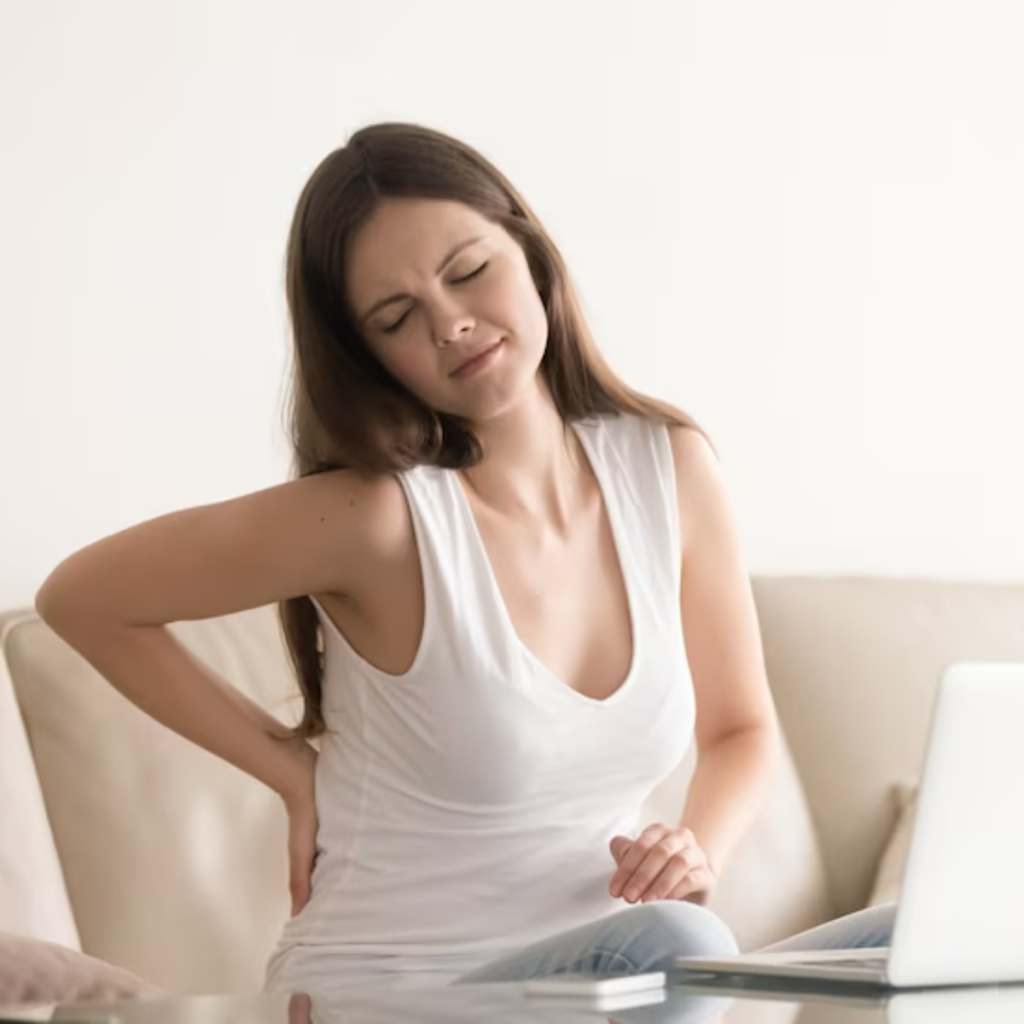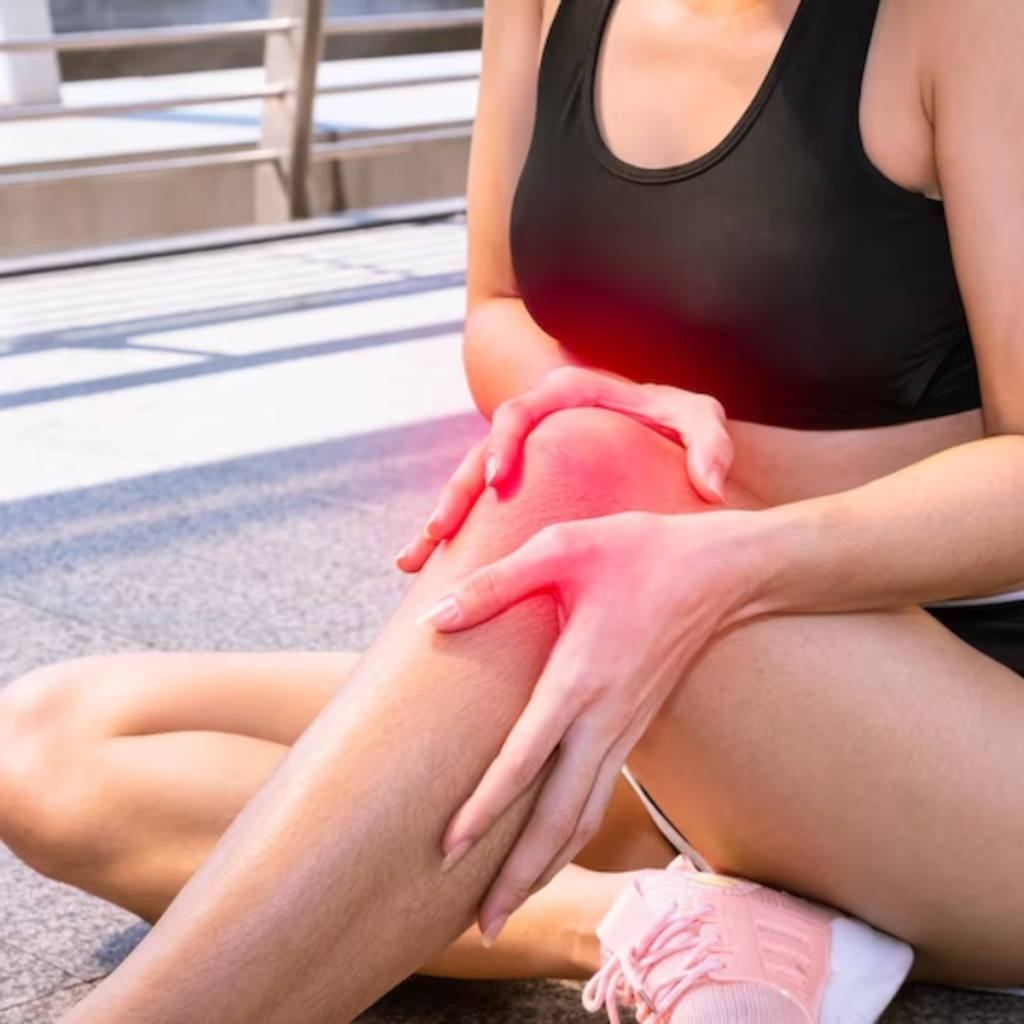Learn how to identify the warning signs of postpartum back pain and take proactive steps to prevent and manage it.
Identifying Warning Signs of Postpartum Back Pain
Congratulations on becoming a new mom! Welcoming a bundle of joy into your life is an amazing experience, but let’s face it, pregnancy can take a toll on your body. One common issue that many new moms face is postpartum back pain. Don’t worry, though! In this article, we’ll dive into the warning signs of postpartum back pain and explore ways to prevent and manage it.

Understanding the Causes of Postpartum Back Pain
Before we tackle the warning signs, it’s important to understand what causes postpartum back pain. Pregnancy brings about a myriad of changes to your body, some of which can put stress on your back. Let’s take a quick look at a few factors that contribute to this discomfort.
Changes in Posture and Alignment During Pregnancy
During pregnancy, the natural curvature of your spine may change as your belly grows. This can lead to a shift in your center of gravity, putting extra strain on your back muscles.
Additionally, as your baby grows, your uterus expands and pushes against your diaphragm and other organs. This can cause your abdominal muscles to weaken and your spine to compensate by leaning backward. The change in posture can further contribute to postpartum back pain.
Hormonal Changes and their Impact on Back Health
Throughout pregnancy, your body releases a hormone called relaxin, which helps to relax the ligaments in your pelvis to prepare for childbirth. While necessary for a smooth delivery, relaxin can also affect the joints and ligaments in your spine, making them more susceptible to strain and discomfort.
Moreover, hormonal changes during pregnancy can lead to fluid retention and swelling in various parts of the body, including the back. This can cause additional pressure on the spine and contribute to postpartum back pain.
Effects of Pregnancy Weight Gain on the Spine
It’s no secret that pregnancy comes with weight gain. As your baby grows, your body adjusts to accommodate their needs. The additional weight can put stress on your back and lead to discomfort.
Furthermore, the distribution of weight during pregnancy is not uniform. The weight gain is concentrated in the front of the body, specifically the abdomen. This uneven distribution can alter your posture and place strain on the muscles and ligaments supporting your spine, resulting in postpartum back pain.
In addition to the physical changes, the emotional and psychological aspects of pregnancy can also contribute to back pain. Stress, anxiety, and lack of sleep can all impact your body’s ability to cope with the physical demands of pregnancy, potentially exacerbating postpartum back pain.
Common Symptoms of Postpartum Back Pain
Now that we understand why postpartum back pain occurs, let’s take a look at the warning signs you should keep an eye out for. Remember, it’s always important to consult with your healthcare provider if you experience any of these symptoms.
Persistent Lower Back Pain
If you find yourself experiencing ongoing pain in your lower back that doesn’t seem to go away, it could be a sign of postpartum back pain. Pay attention to the intensity and duration of the discomfort.
This persistent lower back pain can make it challenging for new mothers to carry out their daily activities. Simple tasks like lifting the baby, bending over to pick up toys, or even sitting for extended periods can become excruciatingly painful. The constant ache in the lower back can also affect sleep quality, making it difficult for mothers to get the rest they need to recover and take care of their newborn.
Radiating Pain in the Hips and Legs
Postpartum back pain can sometimes radiate down your hips and legs. This type of pain might feel like a dull ache or even a sharp, shooting sensation. Regardless of the intensity, it’s crucial not to ignore it.
The radiating pain in the hips and legs can significantly impact a mother’s mobility. Walking, climbing stairs, or even standing for prolonged periods can become unbearable. The pain can also interfere with the bonding experience between the mother and her baby, as it limits the mother’s ability to engage in activities that require movement, such as playing on the floor or going for walks.

Muscle Stiffness and Tension in the Back
Another warning sign of postpartum back pain is muscle stiffness and tension in your back. If you notice that your back feels tight, and it’s difficult to move or bend, it’s time to take action.
The muscle stiffness and tension in the back can make it challenging for new mothers to find relief through simple stretches or exercises. The tightness can affect their posture, leading to additional discomfort and strain on the back muscles. It can also hinder the recovery process, as the limited range of motion makes it harder for mothers to engage in physical therapy or other forms of treatment.
Risk Factors for Developing Postpartum Back Pain
While every new mom is at risk of experiencing postpartum back pain, certain factors can increase the likelihood. Let’s take a closer look at some of these risk factors.
Previous History of Back Pain or Injuries
If you’ve had back pain or injuries in the past, you may be more susceptible to experiencing postpartum back pain. It’s essential to take preventive measures and seek support early on to avoid exacerbating your existing condition.
Having a previous history of back pain or injuries can make your postpartum recovery more challenging. The changes that occur during pregnancy, such as weight gain and hormonal fluctuations, can put additional stress on your back. This added strain can worsen any pre-existing conditions and increase the likelihood of developing postpartum back pain.
However, it’s important to note that having a previous history of back pain or injuries does not mean you are destined to experience postpartum back pain. With proper care, support, and guidance from healthcare professionals, you can minimize the risk and manage any discomfort effectively.
Multiple or Complicated Births
The number of births you’ve had can also contribute to an increased risk of developing postpartum back pain. Multiple or complicated deliveries can put additional strain on your back, requiring extra care and attention during your recovery process.
Multiple births, such as twins or triplets, can result in a higher risk of postpartum back pain. The additional weight and strain on your body from carrying multiple babies can lead to increased pressure on your back muscles and spine.
Complicated births, such as those involving medical interventions or prolonged labor, can also contribute to postpartum back pain. The physical stress endured during these situations can cause muscle tension and imbalances, leading to discomfort and pain in the back.
It’s crucial to work closely with your healthcare provider to develop a postpartum recovery plan that takes into account the specific challenges you may face after multiple or complicated births. This may involve targeted exercises, physical therapy, and other interventions to help alleviate and prevent postpartum back pain.
Excessive Lifting or Straining During Pregnancy
Pregnancy is a time when everyone is eager to lend a helping hand, but it’s important to be mindful of your limitations. Excessive lifting or straining during pregnancy can strain your back muscles, making you more susceptible to postpartum back pain. Remember, it’s okay to ask for assistance!
During pregnancy, your body undergoes significant changes to accommodate the growing baby. These changes can affect your posture, balance, and muscle strength, making it easier to strain your back muscles if you engage in excessive lifting or straining activities.
Activities such as lifting heavy objects, moving furniture, or even carrying groceries can put undue stress on your back during pregnancy. The additional weight and strain can lead to muscle imbalances and increased pressure on your spine, increasing the risk of postpartum back pain.
It’s essential to prioritize your well-being and listen to your body’s signals during pregnancy. If a task feels too strenuous or uncomfortable, it’s best to ask for help or find alternative ways to accomplish it. By practicing proper body mechanics and avoiding excessive lifting or straining, you can reduce the risk of postpartum back pain and ensure a smoother recovery.
Prevention and Management Strategies for Postpartum Back Pain
Now that you’re armed with the knowledge about warning signs and risk factors, let’s explore some strategies to prevent and manage postpartum back pain effectively.
Postpartum back pain can be a common issue for new moms, but with the right prevention and management strategies, you can minimize discomfort and promote a healthy recovery. In addition to the tips mentioned above, here are some additional strategies to consider:
Maintaining Good Posture and Body Mechanics
It may sound simple, but maintaining good posture is key to preventing postpartum back pain. Be conscious of your posture and avoid slouching or hunching over. Whenever possible, use ergonomic supports, like pillows or cushions, to relieve pressure on your spine.
Furthermore, practicing proper body mechanics is crucial during daily activities. When lifting your baby or any heavy objects, remember to bend at the knees and use your leg muscles rather than straining your back. This can significantly reduce the risk of developing back pain.
Regular Exercise and Strengthening of Core Muscles
A great way to prevent and manage postpartum back pain is through regular exercise and strengthening of your core muscles. Consult with your healthcare provider on safe exercises that can help improve your back strength and support overall postpartum recovery.
Exercises such as pelvic tilts, gentle yoga poses, and low-impact aerobic activities can help strengthen your abdominal and back muscles, providing better support for your spine. Additionally, engaging in postpartum-specific exercise classes or joining a mommy-and-baby fitness group can provide social support and motivation.
Utilizing Supportive Devices and Equipment
There’s no shame in leaning on supportive devices and equipment to alleviate postpartum back pain. Consider using a supportive brace or belt specifically designed for postpartum moms. These can provide added support to your back and help improve your alignment.
In addition to supportive braces, using ergonomic baby carriers or strollers can also help distribute the weight evenly and reduce strain on your back. Investing in a comfortable and supportive mattress can also make a significant difference in your sleep quality and overall back health.
Remember, prevention and management of postpartum back pain require a holistic approach. In addition to the strategies mentioned above, it’s essential to prioritize self-care, including getting enough rest, practicing stress management techniques, and seeking support from loved ones.
Now that you’re armed with the knowledge of warning signs, risk factors, and preventative strategies, you’re well on your way to identifying and managing postpartum back pain. Remember, taking care of your own well-being is essential for the health and happiness of both you and your little one. Stay strong, mama!



